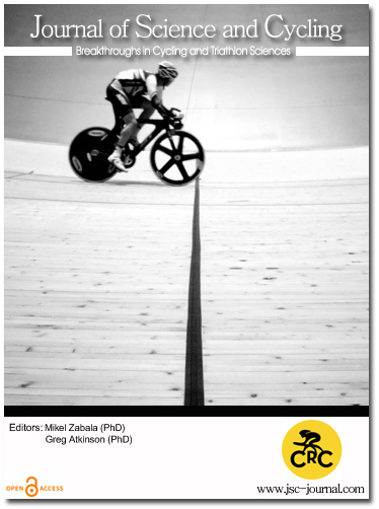Functional threshold power in cyclists: validity of the concept and physiological responses
Abstract
Introduction
Functional threshold power (FTP60) is the highest power that a cyclist can maintain in a quasi-steady state for approximately one hour without fatiguing (Allen; Coggan, 2010). In an attempt to reduce the effort time for FTP determination, the authors proposed a shorter 20-min time-trial. In this case, FTP corresponds to 95% of the power output averaged (FTP20) (Allen; Coggan, 2010). Anecdotally, FTP20 is widely used to estimate FTP60 and consequently used to determine aerobic training zones. In a recent study, FTP20 correlated fairly with mountain bike cross-country performance (Miller et al., 2014). However, no study has investigated FTP20 comparison with individual anaerobic threshold (IAT), FTP60 and its physiological significance.
Purpose: To determine the agreement between FTP20 with IAT and FTP60 and physiological responses at FTP20.
Methods
Twenty-three trained male cyclists were recruited (age: 33 ± 6 years; body mass: 76.4 ± 8.3 kg; height: 179 ± 5 cm; PPO: 327 ± 34 W). Cyclists performed an incremental exercise test to exhaustion, two randomised time-trials (20-min and 60-min), and a time to exhaustion (TTE) at FTP20 (indoor tests). During the tests, power output, HR, VO2, [la] and RPE were measured. During time-trials and TTE, participants were able to view their progress over the course on a computer screen and were provided with information on completed distance and gear selected only. One-way ANOVA with repeated measures were used for mean comparisons between tests. The bias and limits of agreement (LoA) between performance measures and IAT were defined using the method of Bland and Altman. The confidence intervals (CI) were fixed at 95%. Statistical significance was accepted at P < 0.05.
Results
The main findings of this study are presented in Table 1 and Figure 1. The mean power output, HR and VO2 of the FTP20 was not significantly different than FTP60 and IAT.
Discussion
The most direct determination of FTP60 is by simply doing a one-hour time trial. Due to the impact of pacing strategy on performance during such a long time-trial, Allen & Coggan (2010) suggested that FTP20 could be more reliable for FTP60 determination. Accordingly, this study showed no significant differences between 95% FTP20 (236 ± 38 W), IAT (237 ± 29 W; P>0.05) and FTP60 (231 ± 33 W; P>0.05). Moreover, we found low bias between FTP20 and both IAT and FTP60 (Figure 2). The TTE at FTP20 was ~51 min, although we found a high inter-individual variability. Collectively, the results of this study support that FTP20 might be used as a method of FTP60 determination in trained cyclists.
Conclusions
The FTP60 is similar and showed good agreement with the power output of IAT and FTP20, although some random error might be found. In addition, TTE at FTP20 was close to one hour. Therefore, this study support the concept of using FTP20 to estimate IAT and the power output sustained by a cyclist for approximately one hour. However, due to high LoA caution needs to be addressed if the FTP20 is used interchangeably with IAT and FTP60.
Downloads
Published
How to Cite
Issue
Section
Copyright (c) 2018 Journal of Science and Cycling

This work is licensed under a Creative Commons Attribution-NonCommercial 4.0 International License.
Authors contributing to Journal of Science and Cycling agree to publish their articles under a Creative Commons CC BY-NC-ND license, allowing third parties to copy and redistribute the material in any medium or format, and to remix, transform, and build upon the material, for any purpose, even commercially, under the condition that appropriate credit is given, that a link to the license is provided, and that you indicate if changes were made. You may do so in any reasonable manner, but not in any way that suggests the licensor endorses you or your use.
Authors retain copyright of their work, with first publication rights granted to Cycling Research Center.






